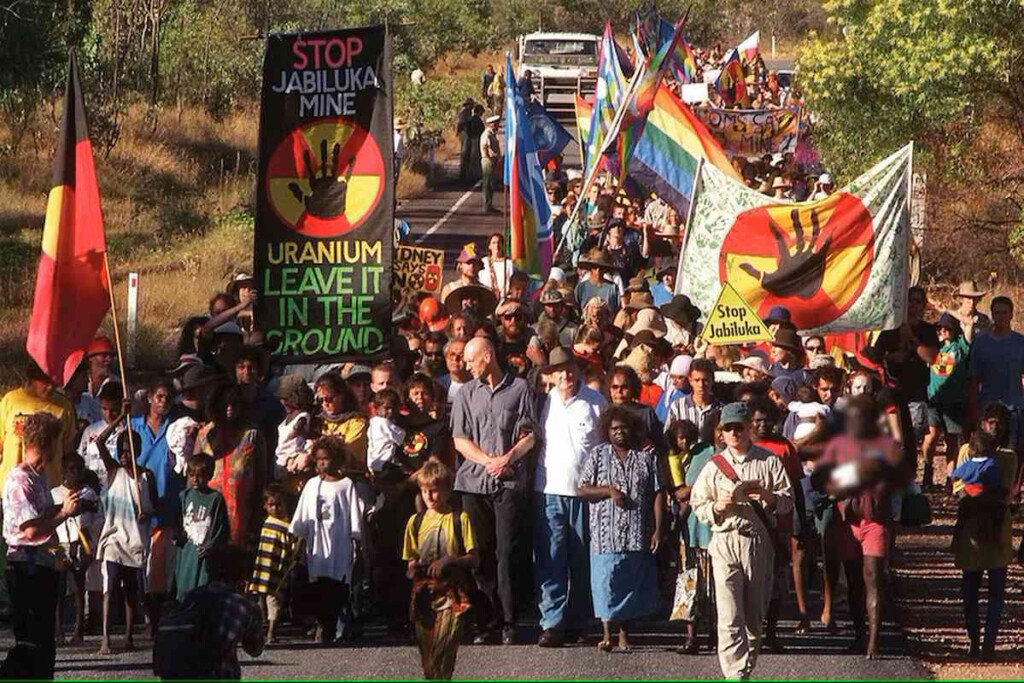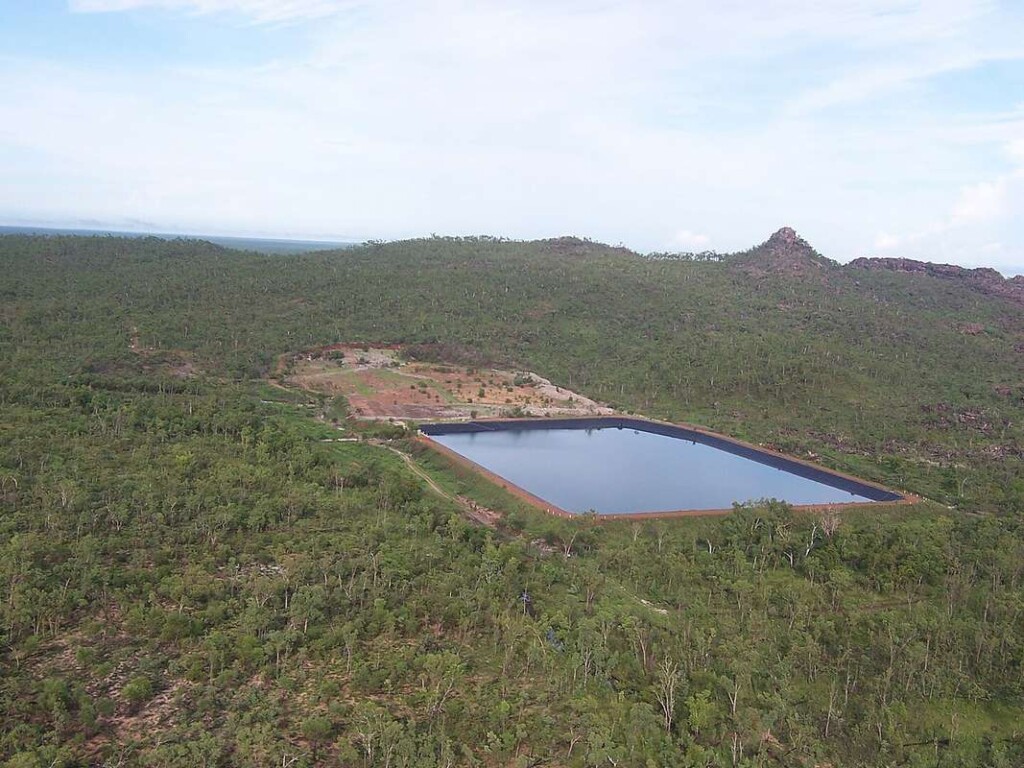 A protest at the mine’s access road in 1991 – Supplied by Gundjeihmi Aboriginal Corporation / ABC News
A protest at the mine’s access road in 1991 – Supplied by Gundjeihmi Aboriginal Corporation / ABC NewsIn a major win for the traditional owners of Australia, the federal government has ordered the end of the land leasing program for the Jabiluka uranium deposit, ensuring that mining will never occur on the land owned by the Mirarr people.
At the same time, Prime Minister Anthony Albanese and his coalition added it to the nearby Kakadu National Park, a UNESCO Natural Heritage Site twice the size of Yellowstone.
Various parties to the disagreement over the destiny of Jabiluka described the decision as “a great day for the Mirarr people, for Kakadu, the Northern Territory, and for Australia,” “a genuine and welcome surprise,” and “a reminder of the extraordinary privilege all of us have, to share this continent with the world’s oldest continuous culture.”
The dispute over Jabiluka dates back to 1991, when traditional owners, environmental groups, peace activists, and others protested the granting of a lease for Jabiluka to Energy Resources Australia (ERA) majority-owned by the Australian mining giant Rio Tinto Group.
Located in the Northern Territories, activism by Indigenous owners like the Mirarr and Djot has forced successive administrations to defer or avoid the actual development of the potential mine. This included a road blockade in 1998 during which 500 people were arrested.
The Jabiluka Long-Term Care and Maintenance Agreement signed in February 2005 gave the traditional owners veto rights over the future development of Jabiluka.
Key details about the history of Jabiluka to understand are that the land has been under mining leases for over 30 years, but they’ve never been developed. ERA was not seeking to renew the 10-year lease to try and push forward with uranium mining, as they acknowledge the traditional custodians of the land have the ultimate say as per the 2005 agreement.
ERA stated they sought renewal of the lease in order to secure the asset should the traditional owners ever change their minds. Jabiluka is one of the world’s richest and most extensive uranium deposits ever located.
In 1991, PM Bob Hawke declined to exploit the mine’s riches, as did the Gillard Administration in 2013, but with Rio Tinto and ERA never forsaking the mine as a lost cause, and the Albanese government planning to move forward with nuclear power expansion, the Mirarr and others felt that another, hopefully final push was necessary.
 Jabiluka Uranium Mine as seen from an Airvan aircraft – Djapa84, CC 3.0. BY SA
Jabiluka Uranium Mine as seen from an Airvan aircraft – Djapa84, CC 3.0. BY SAAs a result, the federal government provided recommendations to the state government of NT that the will of the people should be respected, and that the lease should not be renewed.
YOU MAY ALSO LIKE: Norway Rewilds Arctic Coal Mining Town in Largest Operation of its Kind, Gives New Hunting Ground for Polar Bears
“[It]means there will never be mining at Jabiluka,” Mr. Albanese was quoted as saying last Saturday. “This beautiful part of Australia is home to some of the oldest rock art in the world, a reminder of the extraordinary privilege all of us have, to share this continent with the world’s oldest continuous culture.”
A Rio Tinto spokesperson acknowledged the announcement, and told ABC News Down Under that the company “is pleased that the wishes of the Mirarr People … have been respected.”
MORE MINING ENDED: He Saved One of the Largest Forests in India from Coal Mining–and Was Honored With 2024 Goldman Prize
Officials from the NT government said the decision was made based on the recommendations from the Coalition government in Sydney, saying that Federal Resources Minister Madeleine King advised that the most important position to respect was that of the Mirarr.
SHARE This Amazing Environmental Victory For The Land Owners Of Australia…
Source link

